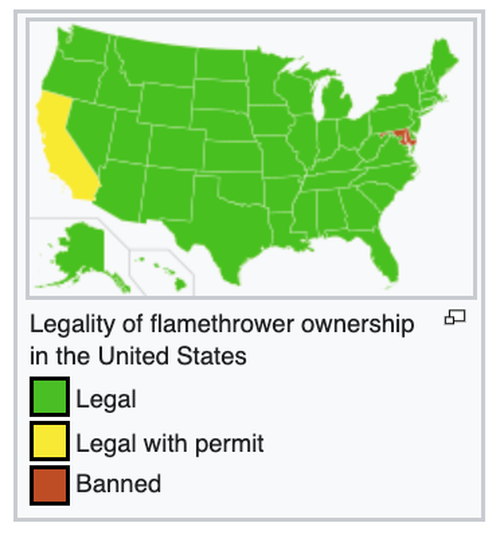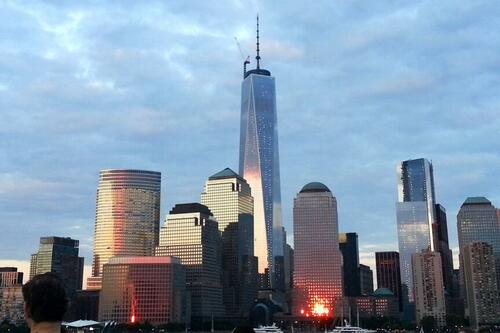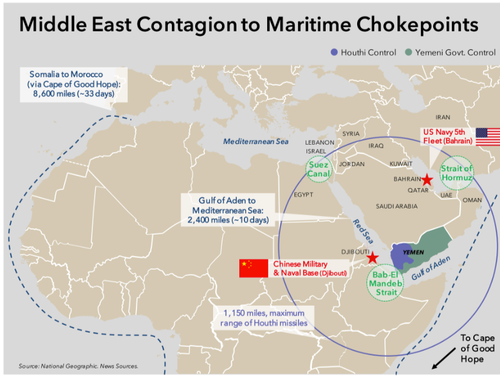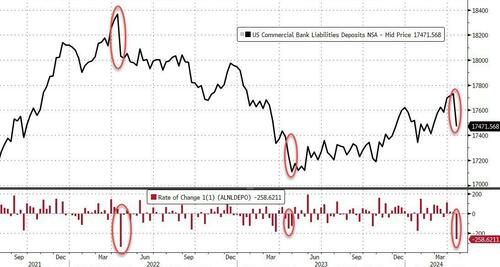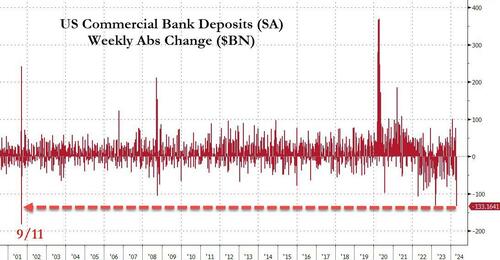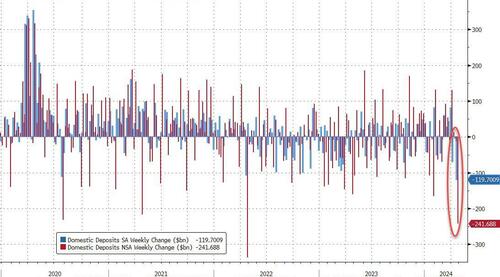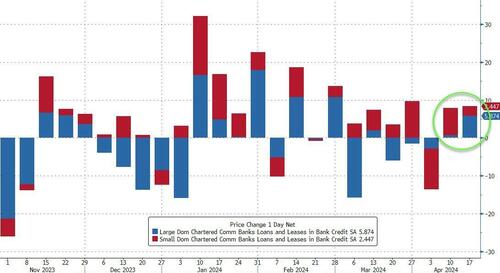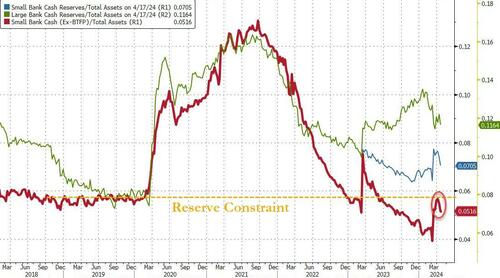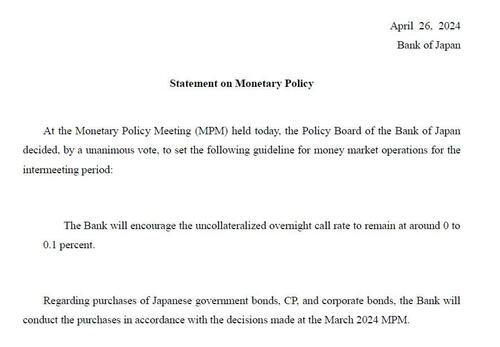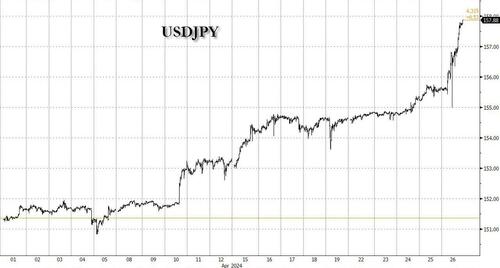Bird-Flu, Censorship, & 100 Day Vaccines: 7 Predictions For “The Next Pandemic”
Authored by Kit Knightly via Off-Guardian.org,
Earlier this month the White House published its new “Pandemic Preparedness” targets.
They are far from alone in covering this. Back in March, Sky News was asking: “Next pandemic is around the corner,’ expert warns – but would lockdown ever happen again?”
On April 3rd, the Financial Times asked something similar: “The next pandemic is coming. Will we be ready?”
Less than an hour ago, the Daily Mail invited us inside “the world’s deadliest cave that could cause the next pandemic”.
Just two days ago a professional panic spreader wrote for CNN:
The next pandemic threat demands action now!!!
OK, I added the exclamation points, but they are very much implied in the original text.
So, while Iran and Israel rattle their sabres on the front pages, I thought we should take a look at the quieter back pages to see what we can learn, and help us predict how “the next pandemic” will unfold.
WHAT IS “THE NEXT PANDEMIC”?
I mean…I feel like that’s fairly self-explanatory.
Seriously though, it’s the one they’ve been predicting from pretty much the moment Covid started. First it was going to be monkey pox – sorry MPox – but that fizzled.
Of course by “pandemic”, we really mean “psy-op”, because nothing about the next pandemic will be any more real than the last pandemic. Hell, given the leaps forward in AI technology, it could be considerably less real next time.
We don’t know any of the details yet, but there’s enough vague coverage to tease out some guesstimates.
WHAT DISEASE WILL THEY USE?
Probably the most important question. We already mentioned monkey pox, but that doesn’t look likely anymore.
Right now they are mostly talking about “disease X” – a term which caused a little panic in certain sections when it first appeared on the scene – but that isn’t some top secret gain of function super disease, it’s literally a place holder name.
And it’s a placeholder name which does its job, for the time being.
After all, they don’t really need an actual name yet, any more than they need an actual disease, they just need the idea of a disease to hold over people’s heads while they construct the legislative rules of their health-based tyranny.
Indeed, the vagueness “Disease X” provides is helpful, as it keeps the legislation vague too.
That said, they will likely want and/or need to produce an actual disease at some point.
When that time comes around, it will almost certainly be another respiratory disease, because they are easy to “fake” using pre-existing endemic diseases and their uniform symptoms.
The prime candidate is bird flu, which has been slow-boiling in the news for two years now and has recently got a big uptick in coverage due to it allegedly passing to people from cows.
The UN reports “pandemic experts” are “concerned over avian influenza spread to humans”. Just yesterday, Jeremy Farrar of the World Health Organization (WHO) warned that “[the] threat Of Bird Flu spreading to Humans is a great concern”
Prompting gleefully sensationalist headlines like this from the Daily Star:
New pandemic ‘expected’ as human-to-human bird flu of ‘great concern’ to WHO
Bird flu is a convenient pick because it enables them to push their health tyranny and their food transition at the same time. They can claim that dairy, beef, chicken and eggs have become “dangerous” as an excuse to ration them or at least force scarcity while they drive the prices up.
They will then push the idea that veganism and/or lab grown meat “prevents pandemics”. Something they’ve been claiming since at least 2021.
The Daily Mail reported just a few hours ago:
H5N1 strain of bird flu is found in MILK for first time in ‘very high concentrations,’ World Health Organization warns
The downside to bird flu is that it’s hard to work the climate change angle into the narrative, so maybe they’ll go with something else.
WHEN WILL IT HAPPEN?
Probably not until the winter, I would guess January 2025 at the earliest, for two reasons:
- They need it to be flu season so they can co-opt normal seasonal deaths into their “pandemic” narrative.
- I think they’ll want to wait until after the “big election year” is over so there are fresh governments in place.
That second point is not just a hunch, but based on the article from Sky I mentioned above. It asks “would lockdown ever happen again?”, and an “expert” answers [emphasis added]:
…if another lockdown was needed, the current Tory government would either have to minimise scandals over their own rule-breaking – or change hands completely to keep the public on board. If we had a new government, people would be far more likely to have faith in them because they would be less likely to say, ‘it’s the same bunch as before – why should we do it again?’
Which I think is correct.
That would also explain the raft of sudden political resignations – including Covid stars Angela Merkel and Jacinda Ardern – which swept the world in Covid’s wake. They were aware then, and are still aware now, their players were spent and they needed a fresh roster before coming back for the second leg.
So, elections first – with all the nonsense that entails – then maybe the “next pandemic”.
HOW WILL IT BE DIFFERENT FROM “COVID”?
Any future pandemic psy-op will be unlikely to follow the covid pattern beat-for-beat, for one thing the Covid narrative spent itself before achieving everything it was meant to achieve.
You can bet the farm that, in the four years since, there have been working groups and researchers poring over the pandemic data to figure out what went wrong and how they can fix it next time.
There seem to be three recurring themes.
1. Vaccines not lockdowns There will be a focus on securing vaccines rather than lockdowns. Indeed, part of the whole “aw shucks lockdowns were damaging who’d have thunk it” rigmarole is about setting up the dynamic that “next time” we need to do anything we can to avoid lockdowns.
Lockdowns will become a threat rather than a fact.
“We HAVE to mandate vaccines, because the economy can’t afford another lockdown.”
“Take the vaccine, you don’t want to have another lockdown do you?”
So there will be more testing, more masks and more vaccine mandates…and/or quarantine camps for the unvaccinated. And if they DO have lockdowns, they will be entirely blamed on the “anti-vaxxers”, of course.
2. Speed speed speed The main failing of the Covid narrative was that it ran out of steam. By the time the vaccines rolled out in early 2021 the pandemic fatigue was already setting in. And by the time the third boosters and fourth waves were in the headlines nobody really cared.
The propaganda blitzkrieg of early 2020 was arguably the greatest and most wide-reaching misinformation campaign of all time – and it was almost overwhelmingly effective. But it slowed, stalled, stopped and staled.
Next time, they know now, they need to be faster. Bill Gates said as much at the 2022 Munich Security Conference. They need to get the disease out the deaths up and vaccines in before people even realise what happened.
Hence the “100 day vaccines” plan. As the ever-reliably-hysterical Devi Shridar writes for the Guardian:
most governments are working towards the 100-day challenge: that is, how to contain a virus spreading while a scientific response, such as a vaccine, diagnostic or treatment, can be approved, manufactured and delivered to the public.
The “100 Day Mission” is the brainchild of CEPI, the Gates and WHO-backed NGO. Its main aim is to make it possible to produce new vaccines for previously unknown pathogens in 100 days.
In the US, the target is 130 days from pathogen discovery to nation-wide vaccine coverage.
It should go without saying that real, reliable, “safe and effective” vaccines cannot be produced in 100 days. Whatever they make, sell and force you to inject in that time…it won’t be a vaccine
3. Free Speech is Dangerous. The slow development of the narrative post-2020 may have hindered the health tyranny agenda, but it was the independent media that really hurt it. The impromptu network of dissident experts, independent researchers and social media movements spread “misinformation” faster than the powers-that-be could fact-check it.
We have seen perpetual messaging about the dangers of “misinformaion and disinformation” since then, including prominently at the most recent DAVOS summit earlier this year, where it was labelled one of the “three greatest dangers” facing the planet.
Last week, a UK Parliamentary Committee published “recommendations” headlined:
Government should learn lessons from pandemic to improve communications and counter misinformation
Only a few days ago, Gordon Brown was quoted in the news “warning” that:
“fake news’ risks preparations for next pandemic”
Which heavily implies they will move to counter this “fake news” before the “next pandemic” begins.
WILDCARD PREDICTION: The multipolar angle. Whatever form the “next pandemic” takes, they will likely avoid the monolithic messaging of 2020, where total global conformity to “the message” was one of the real telltale signs of deception. Next time prepare for countries like India, China and Russia to forge their own pandemic strategy – focusing on some new treatment or technology that the West refuses to endorse.
There are no sources to back this one, yet. It’s just a gut feeling.
*
So what am I officially predicting for the “next pandemic”?
- It will won’t be launched until after the major elections this year, because they want new politic faces untarnished by Covid
- It will likely be bird flu or some other respiratory disease, launched in the winter to hijack the real flu season again
- The chosen disease will fit into one or more pre-existing agenda – either impacting food or originating from some forced “climate change” connection or both
- They will move faster, producing “vaccines” in 100 days to stop people getting wise to the deception as they did with Covid
- They will try and avoid lockdowns, but use them as a threat to enforce vaccine mandates more rigorously
- They will clamp down harder on “mis- and dis-information” before launching the new narrative.
- The next pandemic will have a multipolarity angle to establish a fake binary
That’s how I see it. Feel free to bookmark this post for future reference.
Even if I’ve guessed the details wrong here, there’s no question they are planning to roll out another pandemic at some point in near future. A covid sequel that learns from past mistakes.
While, in some ways, it will likely be worse than Covid was – the good news is that this time we can be ready for it.
Tyler Durden
Fri, 04/26/2024 – 23:40
via ZeroHedge News https://ift.tt/jM7cXES Tyler Durden

